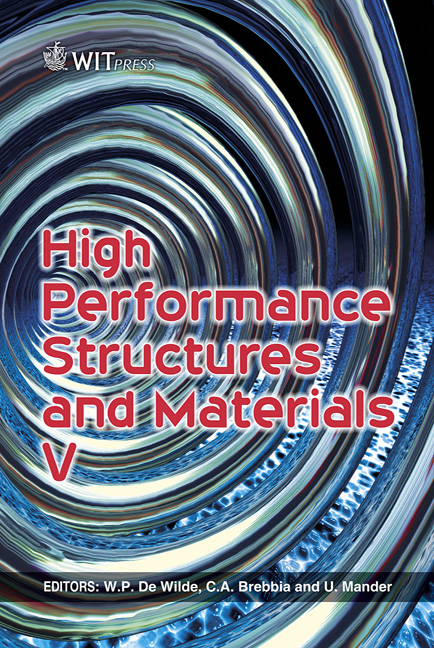Effect Of Surface And Heat Treatment On Tensile Properties Of Jute Fiber Reinforced Composite
Price
Free (open access)
Transaction
Volume
112
Pages
9
Page Range
167 - 175
Published
2010
Size
504 kb
Paper DOI
10.2495/HPSM100161
Copyright
WIT Press
Author(s)
K. Takemura
Abstract
In this study, the tensile properties of Fiber Reinforced Plastics (FRP) using natural fibers were investigated. Jute fibers were chosen as reinforcement. Polypropylene was used as a matrix. Jute Fiber Reinforced Plastics (JFRP) was laminated using a conventional hot press facility. The surface treatment using the astringency of persimmon was performed on the jute fiber before molding. The surface treatment using heat treatment to jute fiber in an oven was also conducted. The static tensile and creep properties of jute fiber reinforced composite were investigated. As a result, the following conclusions are obtained. (1) The treatment using the astringency of persimmon is effective to improve the interfacial strength between jute fiber and the matrix and it decreases the initial elastic strain in a creep test. (2) For a static tensile test, the treatment using the astringency of persimmon increases the initial stiffness. The improvement ratio decreases as the applied load increases. (3) The treatment using heating fibers before molding has an effect in that it increases the tensile strength and initial stiffness, because the treatment improves the interfacial strength between the fiber and the matrix. (4) The effect of heat treatment is the highest in the case where the temperature is 120 degrees centigrade and the time is half an hour. Keywords: green composite, jute fiber, polypropylene, tensile properties, creep, surface treatment, heat treatment. 1 Introduction Glass Fiber Reinforced Plastics (GFRP) have been popular for many mechanical parts. Because of their superior advantages, such as durability, high specific strength, stiffness, GFRPs have been replaced instead of metals in many
Keywords
green composite, jute fiber, polypropylene, tensile properties, creep, surface treatment, heat treatment





